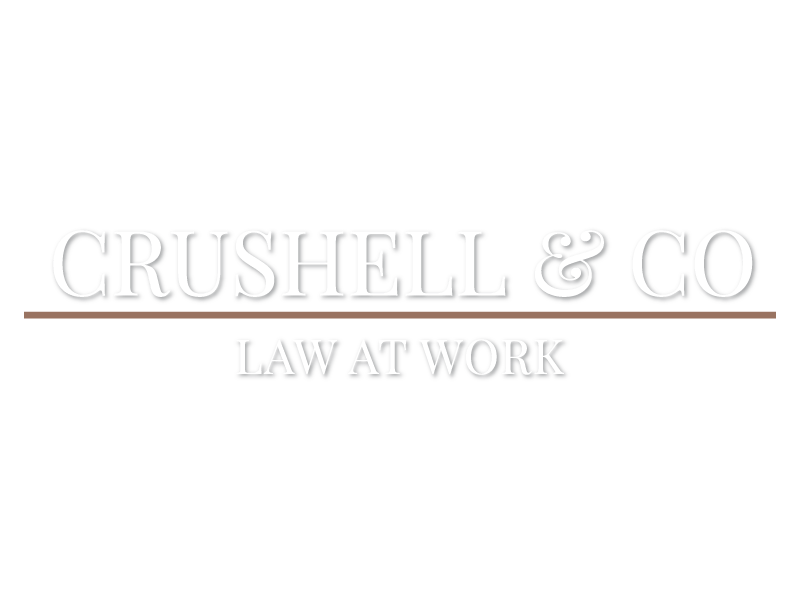A Guide to Protected Disclosures
Protected Disclosure Resources:
What is a “Protected Disclosure”?
“Protected disclosure” is defined as being a disclosure of relevant information made by a worker in accordance with Sections 6, 7, 8, 9 or 10 of the Protected Disclosures Act (the Act).
(Also see A Guide to Protected Disclosures under Irish Employment Law)
What is “Relevant Information”?
“Relevant information” is defined as information which:
- in the reasonable belief of the worker, it tends to show one or more relevant wrongdoings; and
- it came to the attention of the worker in connection with the worker’s employment.
What is “Relevant Wrongdoings”?
“Relevant wrongdoings” are the following:
- that an offence has been, is being or is likely to be committed;
- that a person has failed, is failing or likely to fail to comply with any legal obligation, other than one rising under the worker’s contract of employment or other contract whereby the worker undertakes to do or perform personally any work;
- that a miscarriage of justice has occurred, is occurring or is likely to occur;
- that the health or safety of an individual has been, is being or is likely to be endangered;
- that the environment has been, is being or is likely to be damaged;
- that an unlawful or otherwise improper use of funds or resources of a public body, or of other public money, has occurred, is occurring or likely to occur;
- that an act or omission by or on behalf of a public body is oppressive, discriminatory or grossly negligent or constitutes gross mismanagement; or
- that information tending to show any matter falling within any of the preceding paragraphs has been, is being or is likely to be concealed or destroyed.
Protected Disclosures and Jurisdiction
The Act expressly provides that it is immaterial whether a relevant wrongdoing occurred within the State or elsewhere and it is also irrelevant whether the law applying to that alleged wrongdoing is that of the State or that of another country or territory.
Making a Protected Disclosure
The Act provides a disclosure process with the objective that disclosure should be, wherever possible, made internally within the workplace. The procedure is contained in Sections 6 to 9 inclusive.
Section 6 provides for a disclosure to be made to the worker’s employer.
Section 7 provides for disclosures to “prescribed persons” if the employee reasonably believes that the relevant wrongdoing falls within the matters in respect of which that person is prescribed under the Act and that the information disclosed and any allegations contained in it are substantially true.
Section 8 provides for the making of disclosures to a Minister by a worker employed in a public body and the relevant Minister is the Minister who has responsibility for that public body.
Section 9 provides for disclosures made by the worker in the course of obtaining legal advice. That legal advice may be sought from a barrister, solicitor or trade union official.
It is clear that in the circumstances the protected disclosure should be made as set out above, however Section 10 provides for disclosures other than in accordance with the above if:
- the worker reasonably believes that the information disclosed and any allegation in it are substantially true;
- the disclosure is not made for personal gain;
- any one or more of the conditions in subsection 10(2) is met; and
- in all the circumstances of the case it is reasonable for the worker to make the disclosure.
The conditions set out in subsection 10(2) are that:
- at the time of making the disclosure the worker reasonable believes that he would be subjected to penalisation by this employer if he made a disclosure in accordance with Section 6, 7 or 8;
- that, in a case where no relevant person is prescribed for the purposes the worker reasonably believes that it is likely that evidence relating to the relevant wrongdoing will be concealed or destroyed if he makes a disclosure under Section 6;
- that the worker has previously made a disclosure of substantially the same information in accordance with Section 6, 7 or 8 or the relevant wrongdoing is of an exceptionally serious nature.
(Also see When is an ‘Act’ a Protected Disclosure?)
Protections after making a Protected Disclosure
Part III of the Act sets forth the protections afforded to persons who make disclosures.
Section 11 incorporates a number of significant amendments to the Unfair Dismissals Act insofar as the dismissal arises wholly or mainly from the making of a protected disclosure. In the first instance the qualifying service periods do not apply and secondly such a dismissal is of the “automatic unfair” type. Thirdly the maximum compensatory award is increased from two years' remuneration to five years' remuneration.
Section 11 of the Act provides that the award of compensation under the Unfair Dismissals Act may be reduced by up to 25% if the investigation of the relevant wrongdoing was not the sole or main motivation for making the disclosure.
The Act also provides significant protection for whistleblowers against penalisation.
“Penalisation” is widely defined in the Act and an employer is prohibited from carrying out any act or making an omission that affects a worker to the worker’s detriment including suspension, layoff or dismissal, demotion or loss of opportunity for promotion, transfer of duties or change of location of place of work or reduction in wages or a change in working hours.
Penalisation also includes the imposition of any disciplinary reprimand or other penalty or other unfair treatment, coercion, intimidation or harassment.
(Also see Unfair Dismissal and Penalisation)
Protected Disclosure and Defamation
The Act also provides that the making of a protected disclosure will give a defence of qualified privilege under the Defamation Act 2009 and also the worker making a protected disclosure will be immune for civil or criminal liability in respect of same. The immunity in respect of criminal liability will be limited to circumstances where the whistleblower reasonably believed that he was making a protected disclosure.
Redress for those who make a Protected Disclosure
Applications for redress for penalisation are made at first instance to the Workplace Relations Commission (WRC) and an Adjudications Officer may require the employer to take a specified course of action and require the employer to pay compensation up to a maximum of five years' remuneration if the Adjudicator makes a finding in favour of the employee.
That compensation may be reduced by up to 25% if the investigation of the relevant wrongdoing was not the sole or main motivation for the making of the original disclosure. An appeal lies to the Labour Court from a decision of the WRC under the penalisation clause.
Section 13 provides that persons, including workers, employees and third parties, may have a cause of action in tort against a person who causes detriment to them
Share








